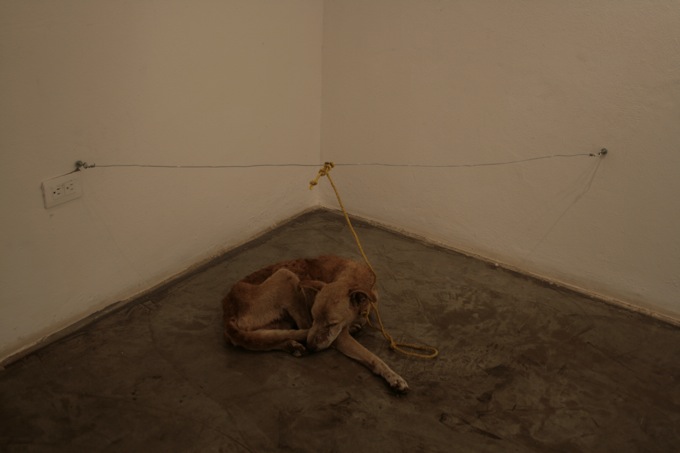Claim: A Costa Rican artist starved a dog to death as part of a gallery exhibit.
Example: [Collected via e-mail, 2007]
Sign this petition and REPOST this please.
Date: Oct 15, 2007 12:47 PM
Dear all, just received this and you bet I'll be signing the petition -
From Vesna Jones -
Dear friends, this is very cruel and sad. An "artist" from Costa Rica, named Guillermo Habacuc Vargas, put a starved dog as a work of art, the poor dog died there, he did not want anyone give him food or water. This monster asked some children to chase the dog and he paid them for their dirty work to give him the dog.
In that event, (in which the dog died) he was chosen to represent his country in the "Bienal Centroamericana Honduras 2008", the petition site is to sign to boycott him, so he won't can participate in the event:
https://www.petitiononline.com/13031953/petition.html
Please see the pictures:

https://liveweb.archive.org/https://elperritovive.blogspot.com/
The emails of the Bienal to ask that this monster wont't be select to representative of his country are:
bienalcostarica@gmail.com, info@madc.ac.cr
Origins: The above-quoted petition began circulating in
We haven't yet been able to confirm whether the circumstances of the exhibit were as commonly represented, however. The most extreme claims about this exhibit maintain that the dog was continually mistreated, confined in the gallery and denied food and
water for several days until it finally starved to death. Other accounts state that the exhibit was deliberately set up so that the dog
appeared to be neglected while the gallery was open to the public, but the animal was otherwise properly cared for. Yet other reports (such as an article about the exhibit published in the Nicaraguan newspaper
A query to the World Society for the Protection of Animals (WSPA) brought a response indicating that the circumstances surrounding the controversial art exhibit were unclear to them as well, and that since the artist would be presenting a different, unrelated exhibit at the upcoming Central American Biennial, the Costa Rican authorities have so far declined to disallow him from representing that country:
The WSPA is well aware of this situation. It does appear that the facts have been misconstrued in some news articles, however. The artist is Costa Rican, and this one-time exhibit happened in a Nicaraguan art gallery last October. It involved one dog, and this dog was not replaced by another after it had died. While there is an animal cruelty law in Costa Rica, there is no such legislation in Nicaragua; so unfortunately the artist did not break the law by mistreating this dog. As far as we are aware, he is not planning on doing this exact same thing again, but the controversy now lies in the fact that he has been chosen to represent Costa Rica at the Central American Biennial, set to take place in Honduras this year, with an exhibit apparently not involving a dog this time. The news of the exhibit did not seem to get picked up by the Costa Rican press until about a month after it happened. Even then there was very little coverage and it was never made clear whether the dog actually died, how long it was there and why nobody did anything if it was suffering. Following this, people around the world began protesting against Vargas, and our Costa Rica office issued a statement in response to this act. A member society of ours in Honduras (AHPRA) also took action and wrote a statement which was sent to the appropriate authorities in Honduras. The WSPA Costa Rica office has also contacted the Ministry of Art and Culture, to urge them to consider disallowing Vargas from representing Costa Rica at the Central American Biennial. The response was that since Vargas was participating at the Biennial with a different exhibit, they could not ban him from attending. This issue is of concern to the WSPA, and it is unfortunate that this artist will be able to gain publicity through this second exhibition despite his previous display involving mistreatment of this dog. The WSPA is completely opposed to the use of animals for entertainment purposes. Despite this, it seems that there is little more that can be done to address this issue, and as we have very limited resources, we must direct them where we can most effectively promote animal welfare. We will, however, continue to monitor the situation in case further action can be taken at any time.
Thank you for contacting the WSPA regarding the issue of this artist in
Central America.
Last updated: 10 August 2011
Sources: |
Ruiz, Geiner Bonilla. "Perro y Un." La Prensa. 5 October 2007.
